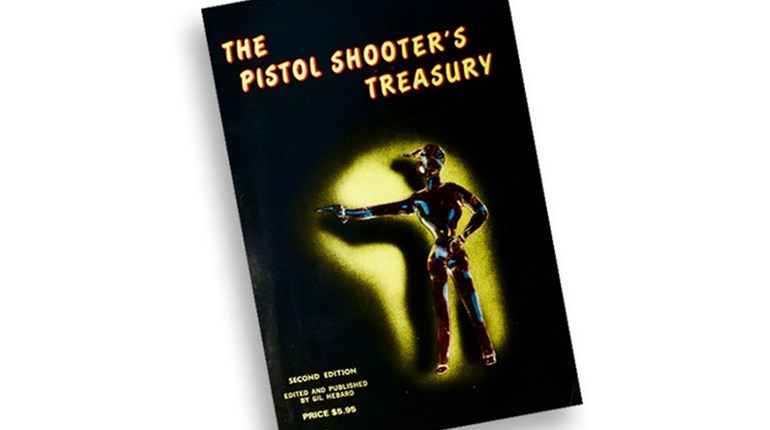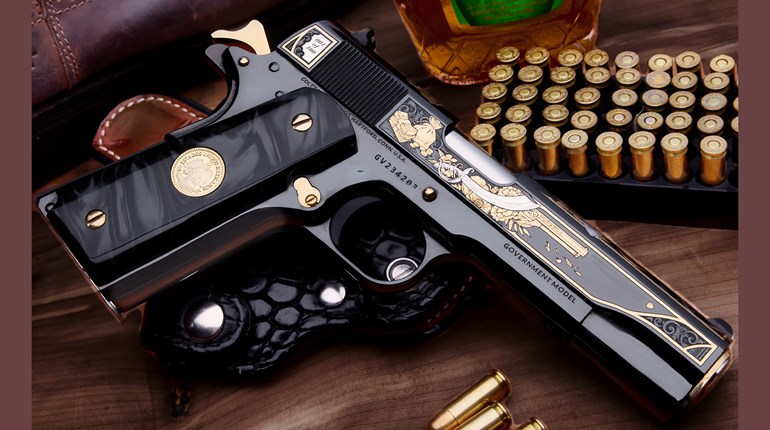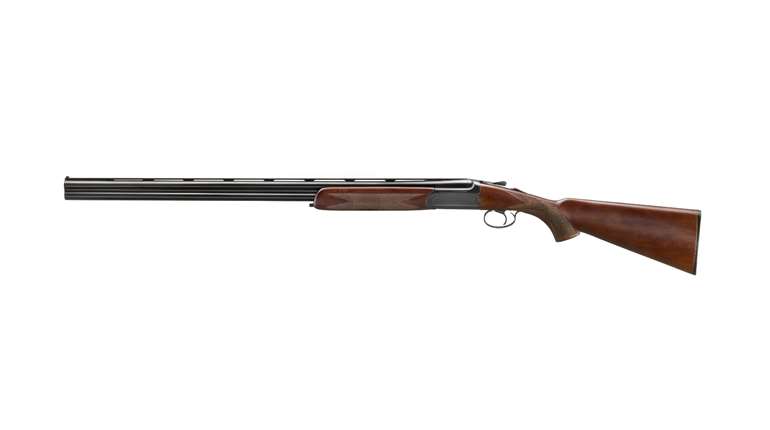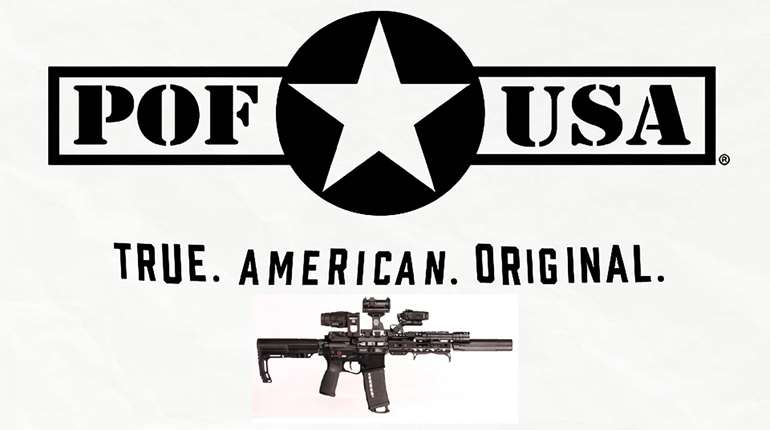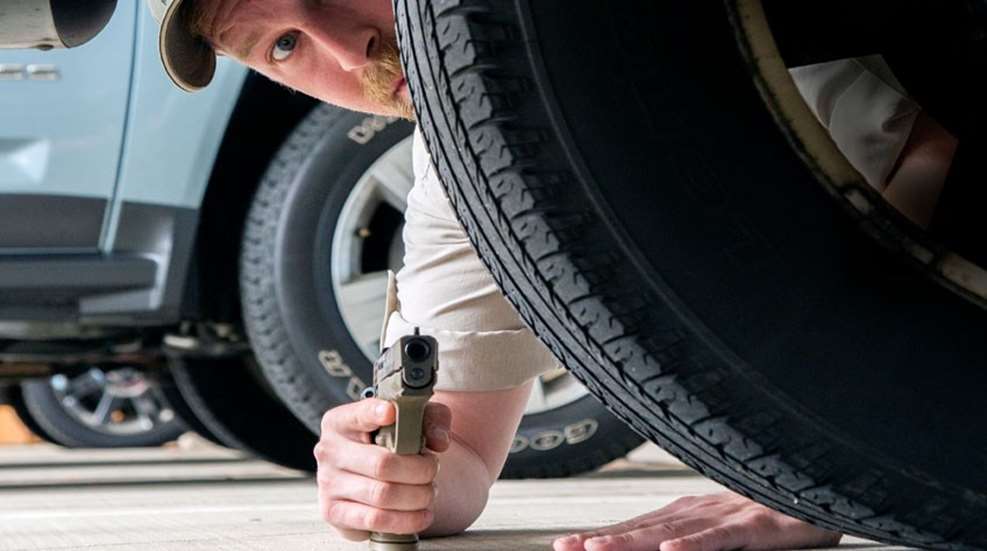
One unseasonably cool weekend in April 2018, I ventured out to the sprawling BSR campus at Summit Point Raceway, just over the West Virginia line, for some intensive instruction in defensive tactics and uses for pistol and carbine. Upon arrival I was met by instructor Larry Connolly, whose 26 years in the U.S. Army are just one of his many qualifications. Over the three days I spent training on the firearms side of BSR (they also have an expansive set of high performance driving programs, which are similarly top-notch), I learned quite a bit from Larry, who took the class from fundamental drills all the way to more intermediate level tactics, such as use of cover, vehicle evacs., and a host of other things.
The work surrounding vehicles I found particularly interesting, as it’s a rarer element to find in a civilian training course. Now obviously there is a reason for this: here in America, attacks on one’s vehicle occur even more seldom than attacks on one’s person. Despite this however, most Americans do spend a large portion of their day in cars, whether driving to or from work, the grocery store, or all too frequently, stuck for hours in mind numbing traffic. When viewed in this light, it’s rather strange that an environment where average Americans spend quantifiable chunks of their day, is so often overlooked in training scenarios. So let’s take a look at vehicle attacks, as well as the how and when of defensive countermeasures from a vehicle.
Let’s get the “when” out of the way right off the bat. Your car is designed to move. Quickly. Provided it’s not disabled or you’re not stuck in gridlock traffic, the gas pedal is your best defense. If someone starts shooting, step on it and get the hell out of there. If however, like me, you’re graced with the privilege of residing somewhere world-famous for its road congestion, here are a few tips and tricks that could keep you one step ahead of harm.
It may sound cliché, but don’t panic, especially in this scenario. Panicking could lead to thrown doors bouncing back shut, repeatedly yanking on a locked door or even mistakenly exiting the vehicle on the side of the attack. Instead, open the door (if gunfire is coming from your side, that could mean a quick trip over the center console), pin it open with your foot to prevent it from rebounding, and exit the vehicle, drawing your sidearm as soon as you’re able. From here, what you do and where you go depend entirely upon whether the threat has presented in front of you, or to your side.
First off (and this may be obvious for our mechanically minded readers, and certainly should be for those who are military or law-enforcement members), a light-skinned car is not cover. Let me rephrase that: MOST of a car is not cover. Despite what one may see in the movies, with the hero kneeling behind a door valiantly plugging away at the bad guys while fully protected, the fact is that cars, and especially newer ones, are thin metal at best. As a result, while they can conceal your presence or position, cars have three legitimate cover points and only one that is anywhere near sizeable. As many of you may have guessed, these are the front and rear axles and the engine block. Crouching anywhere other than those three positions, with a car between you and an attacker for cover, may not be quite as bad as standing in the open, but its close.
Second, unless your attacker happens to be at some elevation, don’t crowd the car. The farther back you go, the wider the cover-buffer expands, and the smaller the chance is of getting nicked by a flier coming through a thin-skinned area. Compressing oneself behind an axle, for instance, isn’t the easiest prospect, but if you move back from it a tad one can be a little more unencumbered, while still utilizing its cover. Additionally, when one leans out from a distance back, less of a target is presented to an attacker than when one peeks out from directly behind cover.
On a related note, when shooting from behind cover, one should lean out quickly and definitively. Counterintuitive as it may seem, slowly leaning to an angle where one can see and return fire does not make the motion less noticeable, it simply telegraphs the movement to an attacker. Instead, try to minimize the amount of time you spend outside cover with rapid and decisive movements both in and out. Also, try not to continually appear in the same place. A predictable target is never an advantage you want to grant your opposition.
Now that we’ve gotten what qualifies as cover out of the way, we can tackle what happens once you’ve exited the vehicle. Your first priority should be getting to whatever cover position is between you and your attacker (with preference to the engine block), while possibly getting a few shots off at the attacker if you’re comfortable shooting on the move.
Should the situation dictate you move to the side of the car, simply get out and step into a compressed position behind the engine compartment or axle (whether this means prone, crouched or kneeling will be dictated by the situation), making sure to shut the door in the process. This last bit becomes even more important if you are the second person to exit a vehicle, as an open door hinders communication. That being said, only the last person out shuts the door. Don’t close it on top of anyone.
If the attack is presenting from either end, taking cover behind the front or rear of the vehicle is the best option, and comes with the added benefit of being almost fully protected by the engine block (on top of, at this point, quite a bit of other material). In this scenario, leaving the door open is not a bad idea, considering it is between yourself and the shooter. Leaving it ajar could also save you a little time. Whatever you do however, do not just hunch down behind it.
From either of these positions, fire can be returned until the threat is neutralized or until you have ascertained a path to hopscotch your way out of danger, cover point to cover point. The latter, of course, is always the best option if safely available.
While I hope this has been an informative primer on how to effectively use your vehicle as a defense against incoming fire, I cannot overemphasize the importance of drilling it for real. Reading is all well and good, but nothing can beat actually putting lead downrange, especially under the supervision of experts who can effectively demonstrate techniques, and answer any of the questions that will inevitably arise.For that, I can give no better recommendation than the aforementioned Mr. Connolly and the rest of the team at BSR, located only about an hour from Washington D.C., and a mere 53 minutes from Dulles airport. For more information on their programs, check out the BSR website here.













